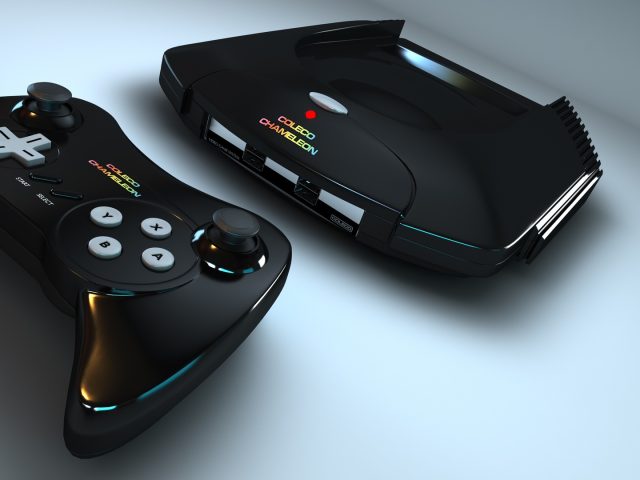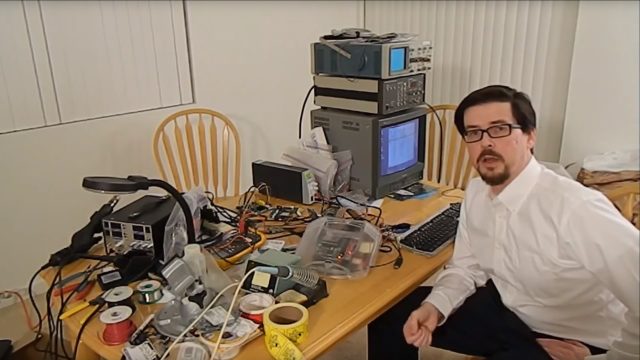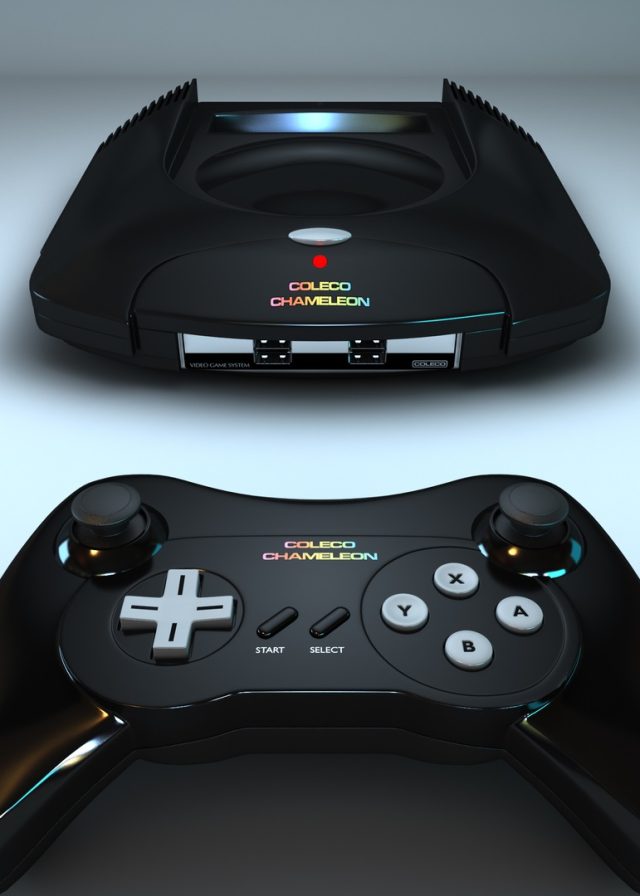
Just over half a year later, the Retro VGS console is no more (though the company behind it still bears the same name). It's been replaced with the Coleco Chameleon, a rebranded version of the same idea that dredges up a well-known name from gaming's "ancient" past.
That rebranding is somewhat necessary, given the poor reputation the Retro VGS had garnered in the classic gaming community during its short pre-life. The system failed to get much buy-in during an aborted Indiegogo crowdfunding effort in September, raising just $80,000 of a hefty $1.95 million funding goal. For context, the Ouya only asked for a minimum of $900,000 in its initial Kickstarter (though Ouya shot past that number to receive $8.6 million in crowdfunding).
Mo’ hardware, mo’ problems
A large part of the problem, as those behind the Retro VGS will readily admit, was the price they were asking for the system: from $300 for an "early bird" edition up to $500 for an "Elite backer edition." At those prices, the system was competing directly with the likes of the Xbox One and PS4, despite only having hardware that was more comparable with systems that came out more than two decades ago.
"From the time we announced the price at the Game On expo in Arizona [in August], everything went downhill," Retro VGS' Mike Kennedy admitted to Ars in a recent interview. That might be putting it mildly: this sprawling 186-page Atari Age thread gives some idea of how quickly people in the classic gaming community soured on the concept after the big reveal. Other forum threads and YouTube videos throughout the community have a similarly skeptical air.
"Where I thought I would get the most support is from cartridge-based communities. It's been the complete opposite," Kennedy said. "These communities are the ones that are the most dead-set against it, at least the ones publicly talking about it."
Kennedy said he takes responsibility for letting John Carlsen, the head of hardware for the old incarnation of the system, lead the team toward bloated features and a sky-high price. "[Carlsen] priced us out of the market," Kennedy said. "[He made] a Rolls Royce of a system that no one would pay for." In October, Carlsen also worked on his own to put out a baffling demo video showing what seemed to be a barely functional prototype of the system that didn't win many fans in the community.
While the core FPGA powering in the original Retro VGS design was rather affordable, Kennedy says, Carlsen insisted on loading the system with costly and unnecessary design quirks that quickly drove up the price. Those include an obfuscated six-layer PCB that cost $100 to $150 on its own—a "monstrosity of a board that filled a Jaguar shell," Kennedy says—internal hardware that converted an HD signal to optional analog output (for old-school TVs) and a $14 AC adapter to power it all.

"It got bloated, it got expensive, then we started adding bells and whistles to this thing to add value to this ridiculously high price we were given," Kennedy said. "We got this reputation of trying to cash in on retro and that really was not what we're trying to do. We're cashing in on it as much as anybody making retro remakes or retro compilations or old school homebrew games that play on old systems. For some reason we're being singled out as trying to bend people over. And I can see where they got that impression. I really do."
"You can't please everybody, and we were trying to go down that road and found that we couldn't do that for a price anybody would pay," Kennedy continued. "Now we're going to do what we said from the beginning, just with a lower price and a much more smartly designed system."
New design, new beginnings
With Carlsen out of the picture, a new hardware team went back to the drawing board for the most part, creating a new design for the Coleco Chameleon's internals that halves the costs associated with the old Retro VGS, Kennedy says. Kennedy promised a sub-$200 price for the Chameleon and said he'd "like to come in at the $150 range" if possible. The new system will be refocused on the original vision of playing 2D sprite-based games like those you'd see in the "8-bit to 32-bit" days. A new crowdfunding effort will likely ask for a more reasonable $250,000 to $300,000, Kennedy said, before debuting a prototype at New York Toy Fair in February.
Distributing games on cartridges is more costly than simply pressing a DVD or putting downloadable bits on a server, but Kennedy says they can get cartridges that will sell in the $20 to $30 range (perhaps a bit more for a game with a big license). "Nobody's going to pay $100 for a cartridge," Kennedy said. "[but] it doesn't cost as much to make a cartridge today as it did 20 years ago. Costs are minute unless the game gets enormously big."

That brings up the specific storage capacity for those cartridges, which is still up in the air. While Retro VGS was originally talking about games up to 1GB, that has been reined in to focus closer to a 100MB range these days, Kennedy says. That should be plenty of space for 16-bit-style games—SNES titles topped out around 48Mb in the '90s. But it could be a tough limitation for games built in inefficient environments like Game Maker and Unity, which can add a lot of bloat to even simple games.
Then there's the physical medium used for game storage, which is also still being debated. Adding extra storage capacity isn't tough if you use cheap SD-card storage, but untouched data on those cards lasts only a couple of years before degrading. Kennedy says he's looking for much longer retention times for Chameleon cartridges, which should be able to last as collector's items for decades.
"If [older systems] had 20-year retention times, they'd all be unplayable right now," Kennedy said. "Whatever modern-day technology can give us for the best price we're trying to build as long a retention time as we can. That's hugely important to [co-founder] Steve [Woita] and I, because everything we play is over 20 years old right now. Nobody builds a product to last 20 years these days. When Atari built these things back in the day, they probably had no idea people would be playing them now."
Hitting the reset button
Over and over again in our interview, Kennedy tried to stress how much he and his team have learned from Retro VGS' recent troubles. "I see the last three or four months as market research," he said. "We've listened to the criticism. We're aware we brought a lot of that on ourselves. But we've learned. We're going back to bring out what we wanted to bring out before all the feature creep set in."
After months of false starts, though, Kennedy says he hopes people interested in the golden age of gaming will give the newly rebranded Coleco Chameleon a fair shake. "We know that we've stirred up a hornet's nest with this concept. There are people who are passionate like you wouldn't believe that want this product, it's crazy. Then there are people who ask 'Why are you bringing cartridges back, it's pointless.' And then there's everything in between."
"It's clear that it struck a chord. Positive, negative, whatever, it struck a chord."
reader comments
71